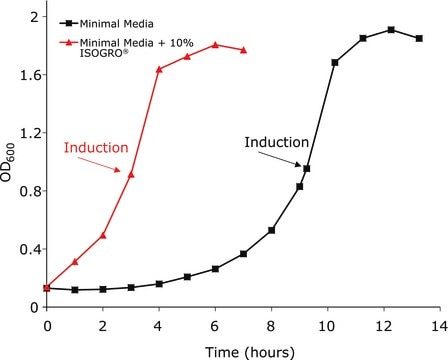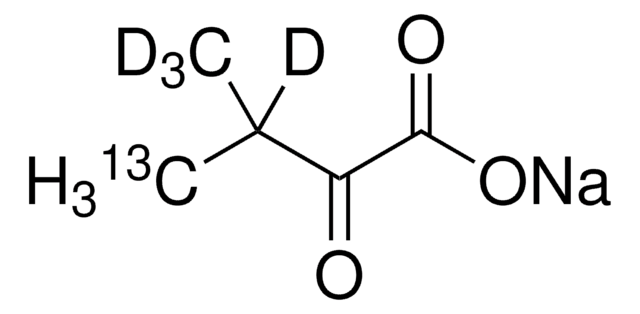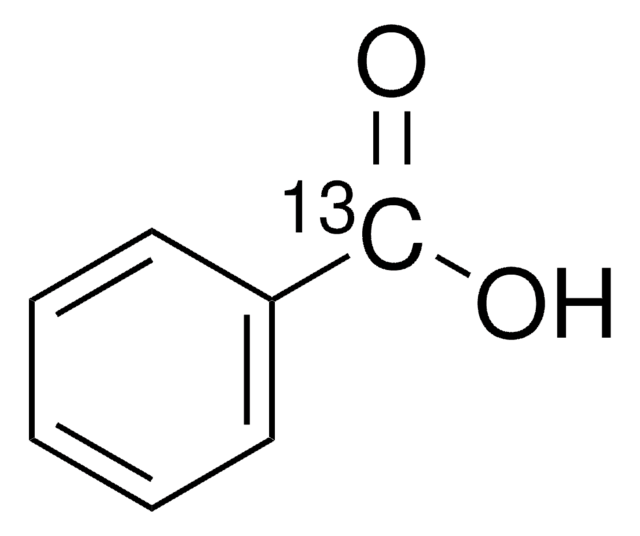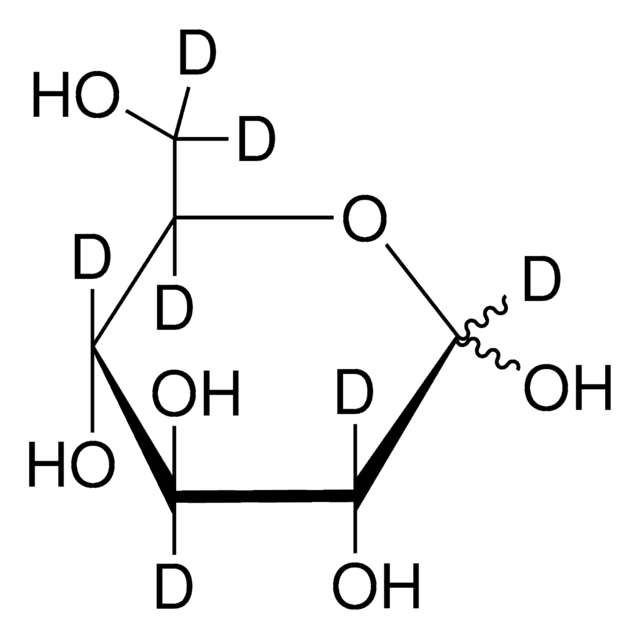606863
ISOGRO®-13C Pulver-Nährmedium
99 atom % 13C
About This Item
Empfohlene Produkte
Isotopenreinheit
99 atom % 13C
Qualitätsniveau
Form
solid
Methode(n)
bio NMR: suitable
protein expression: suitable
Lagertemp.
−20°C
Verwandte Kategorien
Allgemeine Beschreibung
A typical algal lysate (ISOGRO medium) contains: 30% salts, 3% water, 2% glucose and 65% amino acids/peptides.
Verpackung
Rechtliche Hinweise
WGK
WGK 1
Flammpunkt (°F)
Not applicable
Flammpunkt (°C)
Not applicable
Analysenzertifikate (COA)
Suchen Sie nach Analysenzertifikate (COA), indem Sie die Lot-/Chargennummer des Produkts eingeben. Lot- und Chargennummern sind auf dem Produktetikett hinter den Wörtern ‘Lot’ oder ‘Batch’ (Lot oder Charge) zu finden.
Besitzen Sie dieses Produkt bereits?
In der Dokumentenbibliothek finden Sie die Dokumentation zu den Produkten, die Sie kürzlich erworben haben.
Kunden haben sich ebenfalls angesehen
Artikel
Our company presents an informative page regarding the use of ISOTEC Stable Isotopes to Amplify Recombinant Protein Expression with ISOGRO.
Utilizing ISOGRO® Supplementation of M9 Minimal Media to Enhance Recombinant Protein Expression.
Unser Team von Wissenschaftlern verfügt über Erfahrung in allen Forschungsbereichen einschließlich Life Science, Materialwissenschaften, chemischer Synthese, Chromatographie, Analytik und vielen mehr..
Setzen Sie sich mit dem technischen Dienst in Verbindung.










